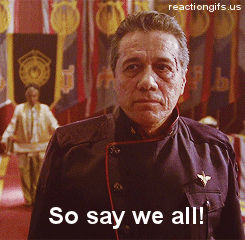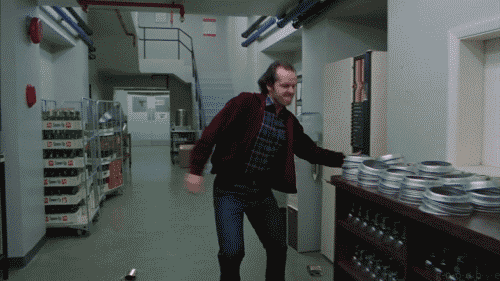Last thing before we begin a new, shortened trading week. I don't see a lot of short timeframe trading here anymore, but I know some of you still do it. And I know there are many more of you who likely would if you had the confidence. So I'm going to take a quick moment to provide a piece of education on a topic that you hear from every single person, the Mancini's to the experts here on this thread, who talk charting and trade setups. You might know what it means and you might not. But I know I've mentioned it a bunch, as has ProgN, 30k, FJ, and many others. And while you think you get it, to you know how to apply it to every single chart you look at? You can remove all indicators and still be decently successful merely from knowing how to apply this. It will help you with targets (remember, short timeframe trading is about base hits), stop levels, trend changes, and directional targets.
We're talking
support and resistance (SR's). But I have been around some great traders and have learned over time from them to think of it as supply and demand.
Essentially, when a stock is moving, whether to new highs, new lows, flat, or bouncing between ranges, these are the levels that you have to understand when short term trading, and even long term trading. Bus most especially in short term. You can be an expert in a multitude of strategies and indicators and still fail more than you win. Because indicators are backward looking, even the ones attempting to be predictive. NOBODY is forward looking without inside information.
When a stock is rising and it's not at new highs or new lows, there were points in its past action that the market was willing to step in and buy shares ("demand shares from the market", or support as you know it), and points where the market was willing to sell shares ("supply the market", resistance as you know it). These points are our roadmap to where future supply and demand might be.
Notice I didn't say "will be". Because they do break. That's why we have to know them. When you hit a period of historical supply that doesn't trigger a new wave of supply, then that indicates the market has moved on is willing to hold for higher gains. With no shares available to sell, buyers are forced to look higher to get in. This is a sign that you should "hold" if invested already, or to buy (or buy more) if not. With your target being the pivot zone of the next supply zone overhead. When you enter a period of demand that doesn't support the downward price, then it indicates the demand for shares in that range is gone and has moved lower. This tells you to sell (hopefully you had this area pegged and got stopped), or to wait until the price moves into the next demand zone and finds "support" in it before you buy. Now that you have read this, it sounds so simple. But how do we apply it?
Let's look at a random stock on hourly candles. I picked Energy Transer, ET. Here's the blank chart. No indicators, no strategies, no other charting. Just price. And notice I'm not using beer candles. Because they move differently. Beer candles are designed to show strength of trend, so the moves in between aren't as pronounced. You need normal candles for developing your supply and demand boxes. You can then switch to beer candles to better see the strength of the trend and indecision forming. Please take a moment to look at it. See if you can spot the zones with a naked eye.

Now here's the chart with the zones filled in. I use yellow for supply and blue for demand. Do what you want. Tradingview is much easier to draw and color with than TOS which I have here. I use both.

Let's start with the supply zone at the top. We are at or close to new highs. Not shown is that it's been 6-8 years since we've been at these levels. So while there is a historical supply zone above, and it is important at all levels of trading, it's not as important for short timeframe trading. What is important is that we have a top on this chart and it's above us. That's the top of the immediate supply zone. Above that and we consider the historical supply zone as the next target. The bottom of the supply zone is harder to find. So how did I find it? The first thing I did was look in the past days and weeks at all the instances the market was willing to supply shares to the market and demand wasn't there to meet it (tops that reversed in any way). You might think you could carry this bottom down further. But be smarter. All the supply zones to the left of my yellow box have been overcome. And the most recent price action has been using them as SUPPORT with buyers willing to step in. So we know that's the top of our DEMAND zone. So look at the more recent action (the last month through Friday). The last major supply zone that sold off in a meaningful way has also been the point of mini selloffs in this period. Boom. You now have your short term supply zone that is acting as resistance.
And since we know that the previous major supply (resistance) zones in the high $13's have become areas of demand, we can draw the top of our demand box going back to when those zones first started becoming resistance. And usually, they will line up with recent demand points before we moved above the top of this demand zone in the current action. Now we have the top and bottom of our first demand (support) zone. So If price Monday moves down into our box, we wait to see if it holds, and we really want to see it jump back above before we enter longs looking back to our existing supply zone overhead. where we will sell most or all of them for our base hit.
Now we need to figure out our next demand zone should the first one fail to hold. For this one, we are looking below the first box at all of the instances that buyers stepped in and formed a bottom. Go from right to left, because recent action matters more than historical. We have a couple hits at the $13.50 level, but there's not much else there outside of very minor support. It's a potential swing, and it did come with volume (sorry, I said no other indicators, but volume should always be on your chart as its the most obvious confirmation of major demand stepping in), so maybe indicate it somehow. But it doesn't seem significant enough to provide serious backstop and give us confidence to buy. And buying there doesn't provide a whole lot gains before we're back in our supply range where we get worried about sellers stepping in. So we look lower. And we find a very nice bottom in the low $13's. Going right to left, when price fell below this bottom it found significant demand step in multiple times. And even at the far left, it was minor demand carrying an uptrend higher. This the top of the second zone. But are we confident merely hitting this point that it will again act as major support? Let's look to the left. And there it is. Price didn't always hold this exact area. It often fell a bit below before finding support. Multiple times. And if we look to the far left we see the most historical bottom and support on our timeframe was the last piece of resistance in the $12.80 range in August before exploding up. That's the sign. Previous resistance turning into a demand buying support zone. That's our bottom. So if price falls into this box, we know we want it to hold that bottom. We can buy anywhere inside. Our most confidence will be the bottom as stop will be immediately below with a ways to fall if breached. But if you can stomach more risk, you can buy earlier knowing demand stepped in all over this box multiple times. And sometimes we are willing to take a risk for what would be a sizeable gain should it break back above.
I hope this helps. If you want to trade SPY or QQQ and try to make a quick buck, this is the easiest way. one last point needs to be drilled home. THERE HAS TO BE BUYERS AND SELLERS. A security that has low volume is not one to do this on. There just isn't enough action to feel anything is reliable. Not enough buyers so lows likely form lower than they should, and reverse is true with lack of supply and highs. But the big thing is, with the lack of participation, you just don't know.
Take the time to set these up night before or morning of any short term trades you plan to make. I did this with OXY recently. I put it on the list and bought shares. But I saw a major supply zone step in hold as resistance, and I sold half, planning to buy back in with a touch of the demand zone. Worst case, it will come back and break that supply zone and I have confirmation to buy again, having made some gains in the meantime.
And I know you're thinking, what about trendlines and channels? They are GREAT. And we even have a lower rising trendline on this chart. It should be noted. But I've found them less reliable in shorter terms. Because markets are non-linear and more often than not, you will get sniped or baited at the very obvious and clear channels. S&R removes the linear aspect of trendlines.












